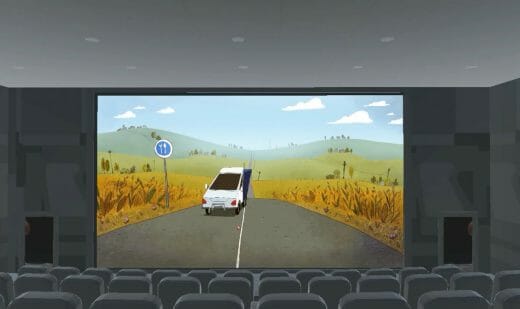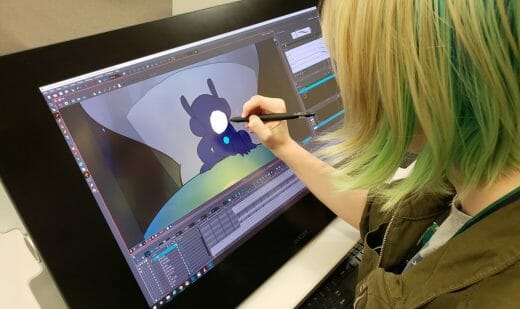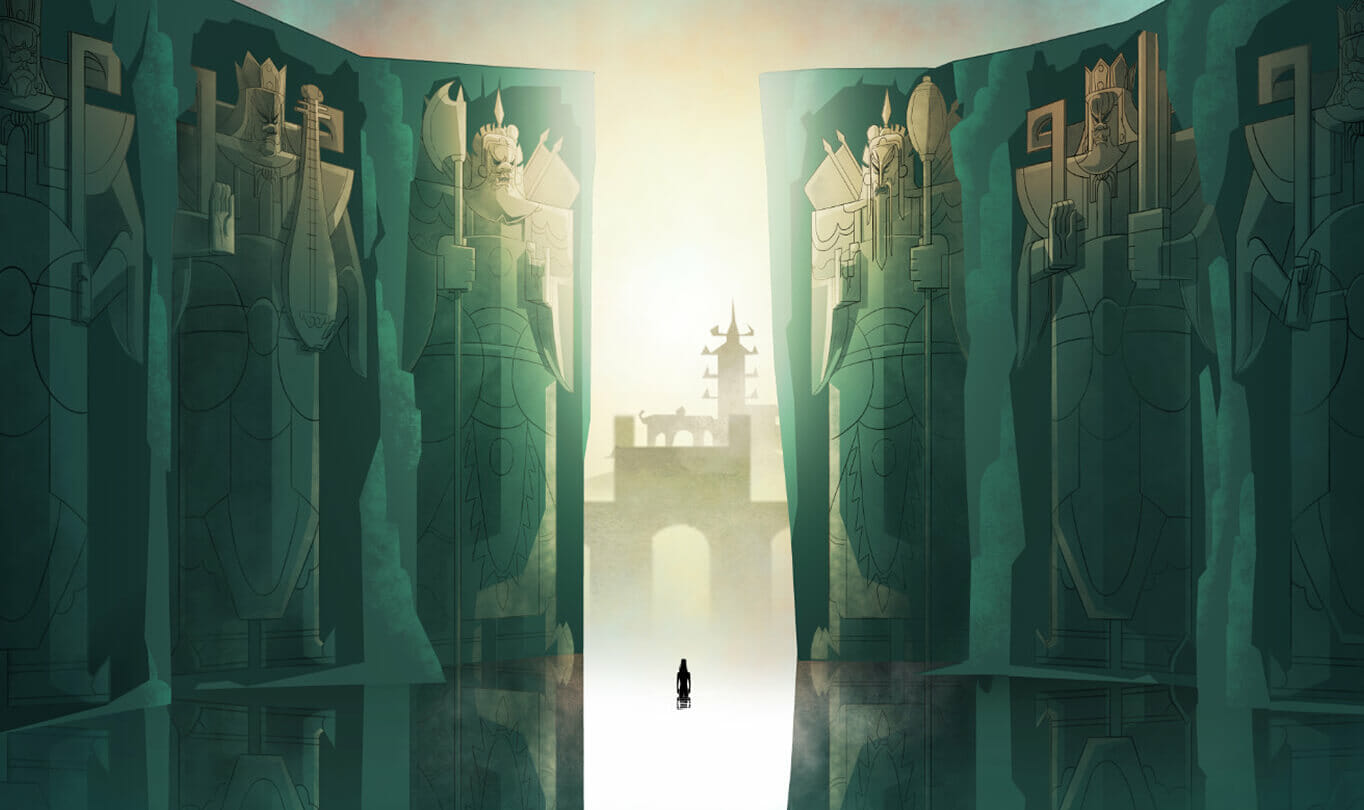
Humid mangrove forests along the Mekong Delta, pristine beaches, impossibly vast fields — just a handful of Instagram posts Westerners have shared of Vietnam. While those postcard-perfect pictures may be great for tourism, in actuality an influx of foreign capital has propelled the country’s economy to being one of the fastest-growing in the world. Vietnam’s population is also rapidly shifting towards urbanization and the majority of the nine million people in its largest metropolis, Ho Chi Minh City, are under the age of 35.
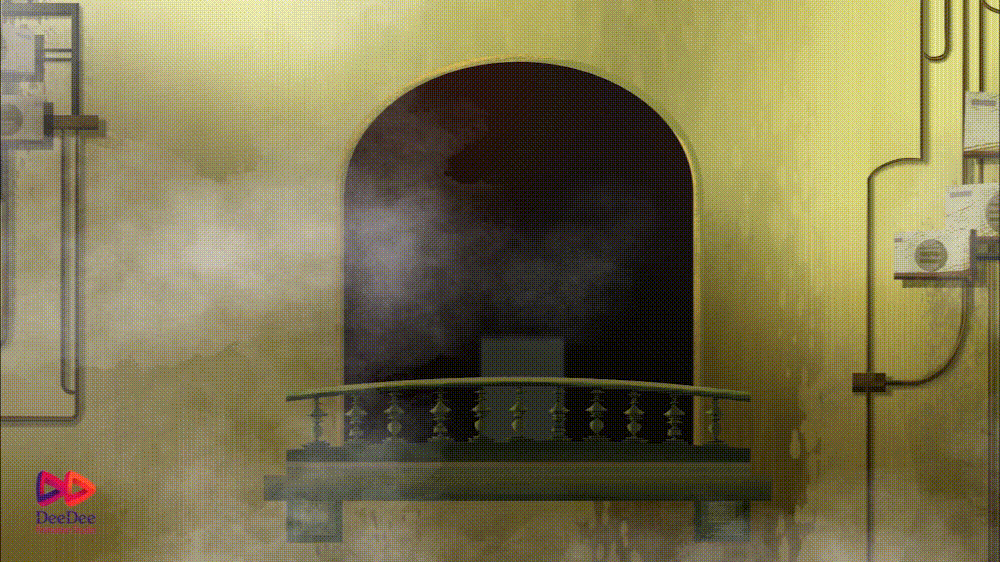
Normally, these factors —large-scale foreign investment, a young population, a relatively inexpensive workforce— are fertile ground for a nascent animation industry. Yet for a variety of reasons, ranging from government censorship to a shortage of training centres, Vietnam remains largely outside the global animation market across creation and consumption, service work and original IPs.
Other countries in the $52-billion Asian market like South Korea, the Philippines and Taiwan have transformed themselves into service work hubs for Western and Japanese companies. The continent accounts for up to 90 percent of American television animation production, by some estimates. Given these successes, Vietnam could also see huge economic benefits by participating in the market — and empower its homegrown storytellers in the process.
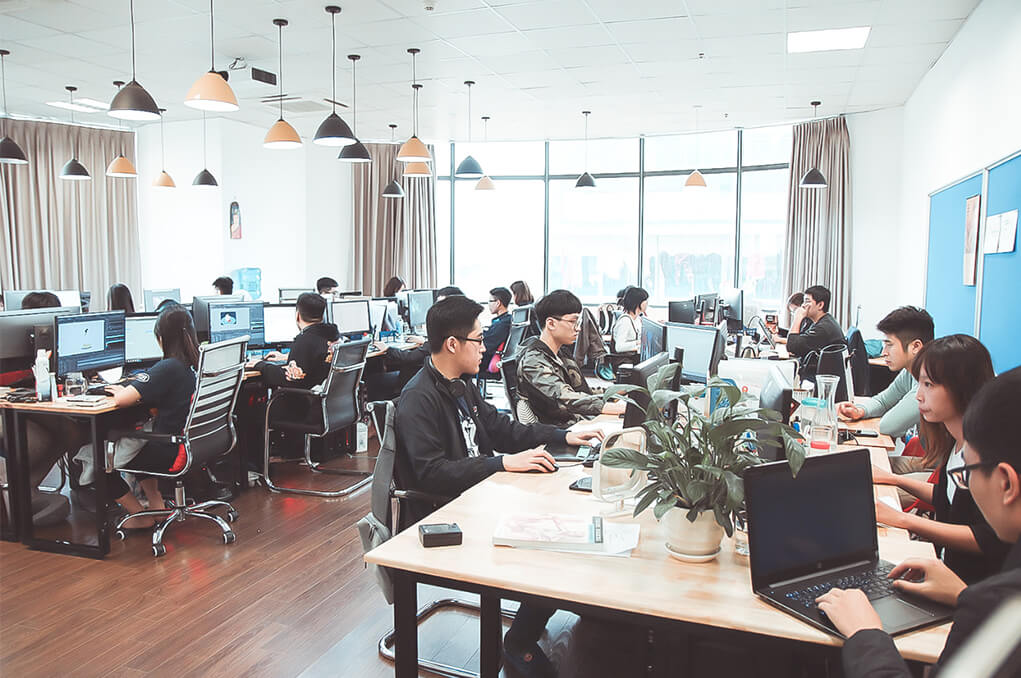
One award-winning 2D studio attempting to establish itself on the global stage is DeeDee Animation. Founded in 2015 and based in Hanoi, its mission is to bring high-quality, made-in-Vietnam animation to both local and international audiences. It has a team of 30 including story artists, concept artists, character designers, animators, background artists, writers and editors.
I think it’s important for Vietnamese studios to develop their own IPs in order to grow the local industry. Our market is huge and has lots of potential that has yet to be fully explored. In order to do so, we need high-quality, locally produced Vietnamese animated films.
Minh Ha, production manager at DeeDee Animation
While it has done productions for Western studios, DeeDee Animation is best known for its original 2D animated short Broken Being: Prequel. The 15-minute film was animated using Toon Boom Harmony and garnered worldwide acclaim on the festival circuit, including winning the Jury Award from the Vietnam Film Festival (Golden Lotus Award) and Best 2D Film at the Khem Animation Film Festival. DeeDee is distinguishing itself from other studies by not only creating service work that’s being seen, but getting Vietnamese-made stories heard.
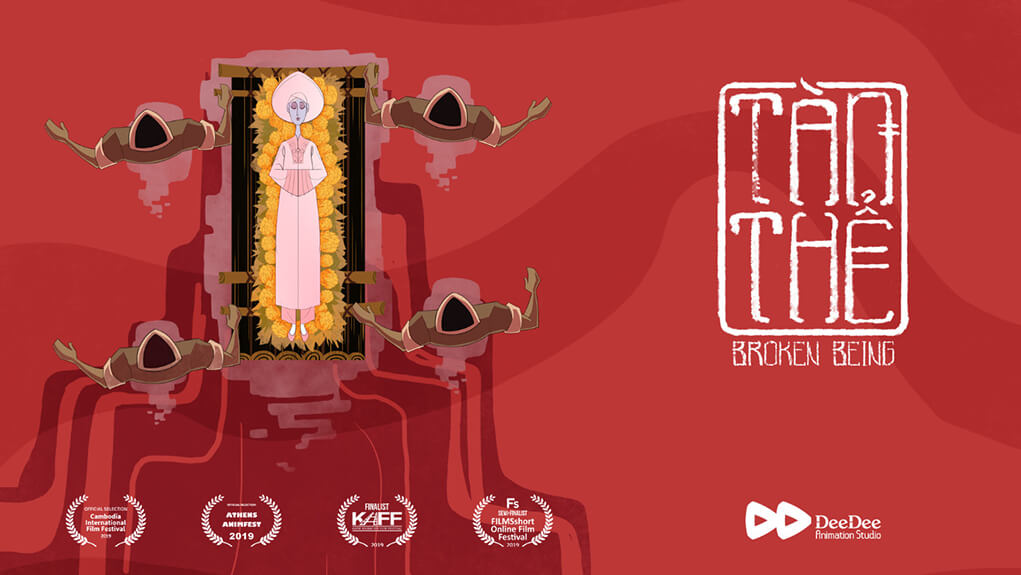
“We wanted to create something that translates and communicates traditional Vietnamese culture through animation — something that has never been done before at a high standard. That is why the film resonates with the Vietnamese audiences, both through its art style and story elements,” says Ha.
According to the South East Asia Animation Report, Vietnamese animators make only around $800 USD per month. In the region, 57 percent of studios are less than six years old and 81 percent of their staff are aged 35 and under. Only 31 percent are developing their own IPs, which makes DeeDee’s work on Broken Being truly exceptional.
As proven by blockbuster productions like Ne Zha and The White Snake in neighbouring China, a burgeoning middle class could also create local demand for Vietnamese animation — whether it be in cinemas or on digital streaming platforms. On top of government censorship, one of DeeDee’s biggest hurdles is overcoming perceptions about animation in Vietnam itself: that it’s only for kids.
Ha says, “While animation surely does have a strong impact on children, we believe it is a storytelling medium that can open imaginations and tell stories that connect with all kinds of audiences in ways live-action never could dream of.”
Broken Being: Prequel took three months to produce though the concept was in the works long before. Made entirely in-studio, the short follows a male protagonist in a utopian Vietnamese village seeking answers about his deceased lover — and discovering that his picturesque reality may not be real at all.
“The story comes from the hypothetical question: ‘what if the reality we’re living is not real, but a mere simulation created by higher beings?’ This was manifested within the film as the main character discovers that his wife was a clone and his whole world is an artificial product,” says Ha.
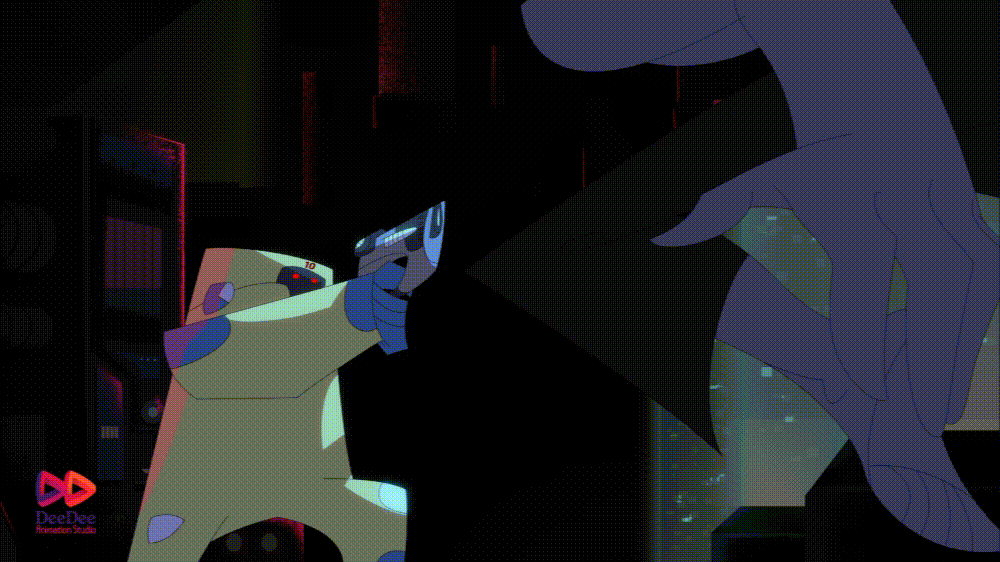
Art director Hoang Ha explains the animated aesthetic of Broken Being, noting the character designs were inspired by Genndy Tartakovsky’s iconic Cartoon Network series Samurai Jack, while the work of legendary Disney artist Eyvind Earle and traditional Asian folk art influenced the backgrounds with their larger-than-life scale.
Despite being largely Vietnamese themselves, DeeDee’s crew explored their culture and worked to animate it authentically in Broken Being. Ha elaborates on this point: “The sequence in the film that we are most proud of is the village’s festival at the beginning.”
The scene was inspired by traditional Lunar New Year’s festivals held in Vietnam, particularly in rural areas around the holiday season. These annual events are a mix of traditional and spiritual beliefs and practices.
DeeDee’s team focused on recreating the festivals’ atmospheres — researching their own culture in order to better represent it through animation, from architecture to fashion to ceremonial activities. In doing so, Ha notes they got to the root of many Vietnamese traditions they had known for their entire lives and developed a deeper understanding of their origins.
Ha says, “Spirituality is something that stands out in Vietnamese culture and underlies almost everything we do — from how we live to how we eat. A lot of our traditions are based on spiritual beliefs, with influences from various religions like Buddhism, Taosim and Confucianism.”
“When producing Broken Being, Vietnamese spirituality stands out as it creates such an interesting contrast with the science-fiction genre. As different as they are, they compliment each other and create something truly unique,” he continues.
The combination of cultural research and visual development was time consuming, but the results speak for themselves — a story told through small details painting a larger picture. A stand-out scene in the festival sequence is set in the shrine, where a sacred Vietnamese spiritual ceremony is depicted. To represent this, DeeDee’s artists studied the poses and movements of traditional dancers.
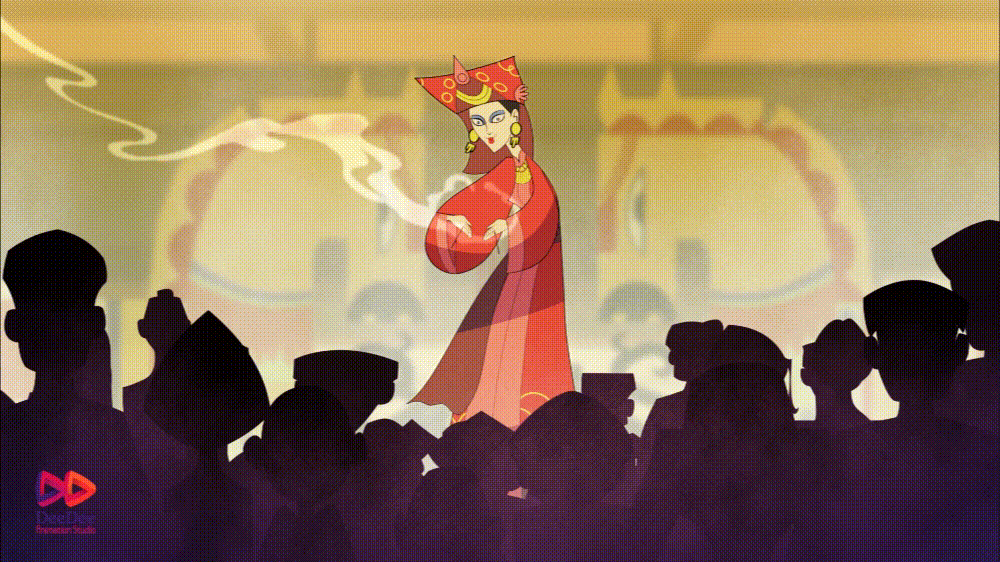
To bring their creative vision to life, DeeDee’s artists planned Broken Being in Toon Boom Storyboard Pro before animating it in Harmony. By producing the project in a seamless pipeline, the studio saved time. Additionally, Hoang notes the intuitiveness and flexibility of the tools provided in both software allowed them to refine, revise, reuse and repurpose assets easily while maintaining quality.
Hoang says, “The Harmony features our team used the most were the node view and the compositing tools. We could composite our scenes within a 3D environment and arrange our background, camera and character elements in ways that better pushed the depth. We elevated the look of the characters by adding shadows and highlights with the cutter and masking nodes, and there were also a lot of different effects provided in the program such as colour scales, bloom, blur and particles that really helped us nail a final look that felt very polished.”
He continues, “Since Storyboard Pro and Harmony are both vector-based programs, we were able to customize our output files to fit our purpose. The working files don’t take up much space in the hard drives, allowing us to work smoothly without any hiccups.”
DeeDee’s team hopes to find a distributor or investor to turn Broken Being: Prequel into an animated anthology series. Once this happens, the work it has put into developing the universe’s rules, backstory and visual language during pre-production will serve as guidelines in the future. In the meantime, it is building out the short’s universe through comics.
Producing work of this quality positions the studio to grow alongside the Vietnamese animation industry. A challenge for both will be finding trained artists, which is often difficult given that many in the country simply cannot afford to purchase software. Fortunately, Ha notes that DeeDee Animation is happy to train its crew in Toon Boom.
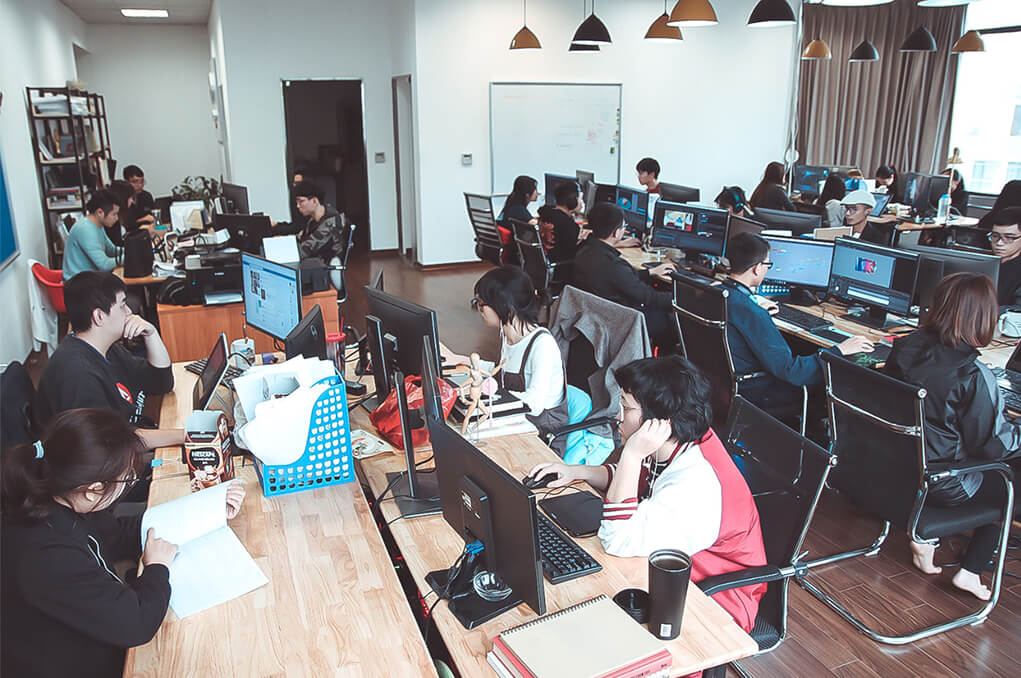
Looking ahead, Ha explains there will still be challenges connecting with Western and Japanese studios, but there has never been more hope — particularly if the growing Vietnamese animation community works together.
“Vietnamese animation is unique in the same way Vietnam is unique. We are a country with an interesting culture, influenced by both the traditions of East Asia and the West via French colonialism. Vietnam has a dramatic history that makes us unique and I think this was translated well in the film: obviously Asian, but there’s something in there that also speaks to a wider range of international audiences.”
If there is anything to take from Broken Being, for us it is proof that Vietnamese studios can tell great stories with animation — in our very own way.
Minh Ha, production manager at DeeDee Animation
He continues, “What makes Vietnamese animation unique right now is the stories Vietnamese creators have to tell. I believe our industry’s breakthrough will come from studios collaborating to produce high-profile international projects. Those opportunities would vouch for the quality and professionalism that we offer, and position Vietnam as a production hub for global clients.”
Watch Broken Being: Prequel on DeeDee Animation’s YouTube channel.


